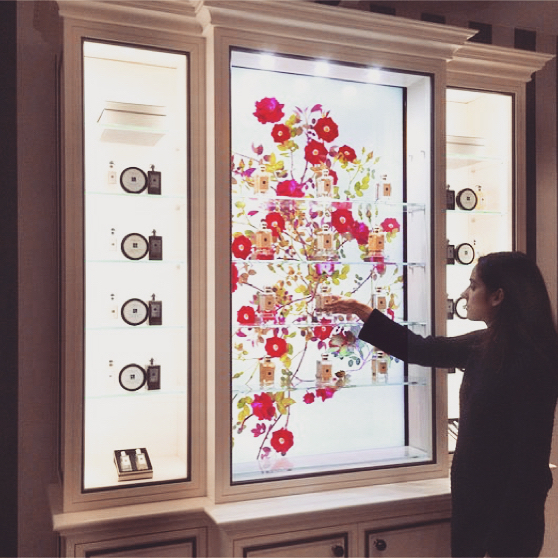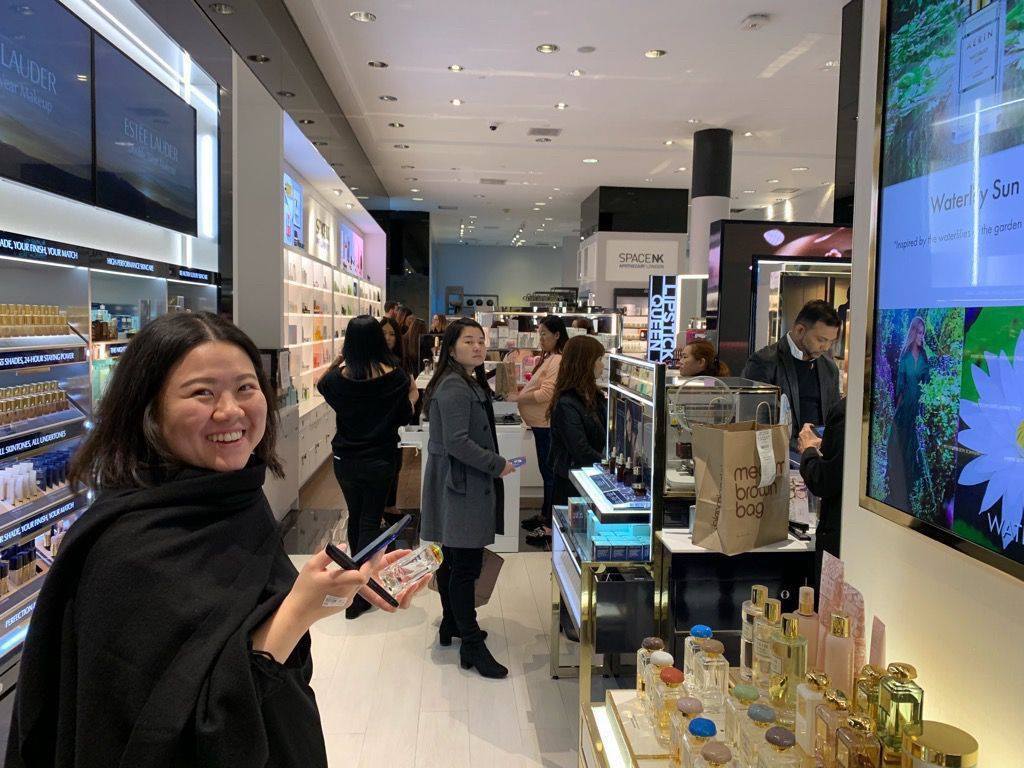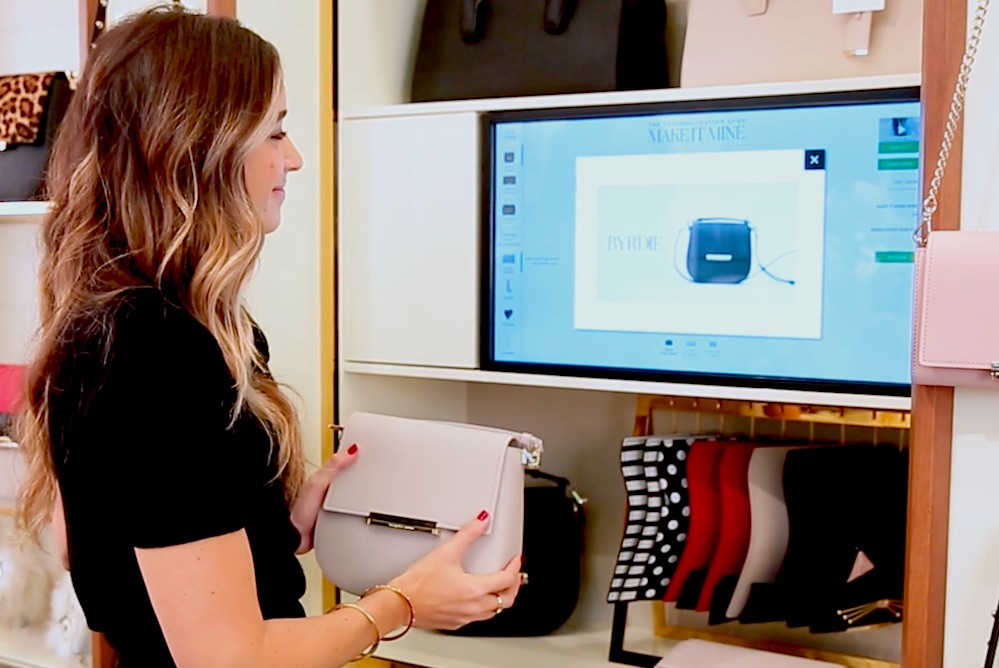E-tailer juggernaut Amazon has focused efforts of late on seemingly unending store concepts and experiences—and not simply because it has already conquered the world of ecommerce. Rather, as Perch Interactive‘s Trevor Sumner explains, the retailer is doing so because it sees the tremendous potential in a new kind of store experience—one that drives engagement by seamlessly uniting the captivation of the physical with the convenience and agility of the digital.
In an interview with PSFK, Trevor explains how PERCH, leader in interactive retail marketing technology, enables the type of magical in-store experiences that drive customer loyalty, ultimately helping retailers combine the best of the physical and digital to enable optimal product engagement and discovery—otherwise, he warns, stores could simply be serving as showrooms for Amazon. Here’s how PERCH helps brands like Kate Spade, Red Bull, Neiman Marcus, Reebok and many more delight and retain customers by overlaying the physical with the latest in digital, from responsive shelving and augmented reality technology to in-store analytics.
Can you describe any retail store or consumer trends that you’re responding to with your service?
The answer is a little bit of everything. One trend is that consumers have moved almost completely to digital media: On average, we all spend four to five hours on our screens daily, while the millennial number is 18 hours. The point is that we depend on digital media to explore and understand products and services, yet that content that is leveraged online is being lost in the store.
At Perch, we are uniting the physical and digital in stores to enable the best of both worlds: the tactile feel of the product in front of you and the digital content that will help you understand it.
From a store design perspective, we are enabling experiences that engage customers in new and exciting ways, creating Instagrammable and delightful moments. As we begin to integrate front-facing cameras, an interesting unit of measurement will be how many smiles our experiences can generate. That delight increases dwell time, which increases loyalty, all because we are bringing the messaging from online into the store.
As an offshoot, we get a significant amount of customer behavior data and in-store analytics. We could use that to understand what kind of products customers need more information on, and what kind of content engages them the most.

What was the motivation behind the founding of Perch? Were there any particular gaps or underserved consumer needs you wanted to address?
Perch was founded by Jared Schiffman, a former MIT Media Lab Graduate Student and Research Associate, who devoted his entire career to overlaying physical products with digital content. He realized the opportunity that was available to create engaging experiences behind products to drive revenue, change business outcomes and lead the sea change from static physical stores to interactive, media-rich stores.
When it comes to this transition, the important part is that these experiences need to be activated on the product level. Right now, if you walk into a store, you see plenty of brand messaging, but a catchy slogan does not help you make a product choice. You need to understand how these products work together.
You need to understand the specifications for each product, and how you could leverage it to its fullest. Four-point print on the back of a product is not enough, and forces people onto their phone to learn more—and then to buy on Amazon instead. Without combining physical and digital, your store is becoming a showroom for Amazon.
The past few years have witnessed retailers using the store experience to serve new purposes. How does Perch fit into this, riding the waves of this transforming retail landscape?
2017 was the ‘retail apocalypse.’ It was great clickbait, but was false. The reality is that in-store retail is a $4-trillion market and in-store advertising is a $20-billion market, growing 3-4% year over year. While ecommerce is growing at a rapid pace, it still only has about 10% of the market, with 1% growth year over year.
With that being said, we are seeing some important trends in the retail space like the “barbell.” Sectors on the low end like grocery and discount stores are doing well, as well as those on the high end like luxury, while the middle market is being hollowed out. What we are seeing is that old stores that leveraged on debt and did not make the transition to physical+digital are closing down.
We see this with stores like Sears and Toys ‘R Us. The case of Toys ‘R Us is particularly interesting, because they had the opportunity to create interactive experiences to engage their audiences. They could have had Play-Doh, Lego and video game competitions.
Now stores with big footprints closing down, because they don’t need as much space, because they don’t need as much inventory and because supply chain is becoming more efficient. What we are seeing is a reinvention: For every retailer that is closing a store, there are two stores that are opening. We see this in particular with digital natives like Allbirds, Casper and Warby Parker.
Why are they doing that? With only 50 stores, Warby Parker sells more glasses in store than online. As they have grown, their cost per acquisition has gone up, and there is no longer any low-hanging fruit. So now they have to compete with other brands who are also pursuing their advertising channels, and costs continue to rise. What they soon find is that it was actually cheaper to acquire customers in-store, and as they expanded their physical presence they found that their ecommerce sales in that area have increased.
Many traditional brick-and-mortar stores have done nothing to update their in-store experiences and saddled up on debt, whereas these newer companies are opening up stores so they can support their growth. That includes companies like Amazon, with its acquisition of Wholefoods, and the launching of its Amazon Go and Amazon Books stores. In the coming years, Amazon plans on launching over 3000 physical stores—they are making that play because they see tremendous upside.
2017 was the retail apocalypse. 2018 was retail reinvention. 2019 is the return of the king.
How does Perch fit into this? Perch creates the experiences that engage customers and provides the analytics that direct-to-consumer brands look for so they can iterate and improve their messaging. This also empowers brands and retailers to bring their digital assets into store.

You focus on merging the physical with the digital to create optimal experiences—sometimes referred to as ‘phygital.’ How do you feel about this term? Do you use it?
I hate “phygital.” I hear “phygital” and I hear negativity. I think it is mostly used abroad. I refuse to use it. That being said, there is no single term that accurately describes what we do. Digital in-store is more emblematic of what we do.
At my last company, LocalVox, we worked on the intersection of “social,” “local” and “mobile,” so people tried to coin the term “solomo.” That term does not seem effective in describing the work we did there.
I imagine someone has invested heavily in “phygital” in their SEO, and is pushing it hard, but I don’t use it and don’t plan on using it.
What insights do you have on what today’s consumers want most from in-store retail?
They want an experience. It is about balance: The goodness of your experience must outweigh the friction in your shopping experience. This is why retailers are doing cashierless initiatives. Ultimately, it is all about creating joy and engagement.
If I had to go to the store to buy deodorant, I would not look forward to that. For someone who enjoys the products at Sephora, they would look forward to that experience. Why? Because they get to engage, learn and try on new things. I think where a lot of places need to grow is to make the integration a bit more seamless. The only way to do that is to implement these experiences beyond “flagship” stores and do real tests to refine experiences.
You’ve worked with retailers like Sephora, Kate Spade, Johnson & Johnson and so many more. Could you describe a specific case of how you helped a retailer transform and improve their store experience?
I’ll speak to Kate Spade on the luxury end and Johnson & Johnson on the CPG end.
Kate Spade runs a fantastic campaign called “Make It Mine,” where a customer can come into the store and customize a purse. The challenge is, if someone wanted to try out several different flaps (black, polka dot and flamingo, there are several thousand combinations), a sales associate would have to spend time creating those different looks for the customer to see the final product.

What we did to solve this problem was create an experience where once the product is touched, the customer could see all of the available configurations in a graphically pleasing, language-neutral manner, making the experience approachable for an international audience. We won a Fast Company Innovation by Design Honorable Mention for this experience and are excited to see how this removes friction from the experience for the consumer and sales associates alike.
With Johnson & Johnson, we saw that this was applicable across products. At ShopRite when a shopper picks up a band-aid, the experience will know to recommend Neosporin. I personally tried the experience when I was looking for Tylenol, and it recommended BENGAY. Prior to that suggestion, I would never considered BENGAY, but I was happy that it recommended it. And right there, Johnson & Johnson made an additional sale.
What’s on the horizon of in-store retail, and for Perch in particular? What will we be seeing more of in the next 1-2 years?
You are going to see Perch in 10x more stores. Our network grew 7.9x in 2018, and I plan to do the same this year.
In the industry overall, the gimmicks are going to go away, and there will be an increased focused on predictive analytics and AI to make sure products are available to be bought in-store and online. I’m particularly interested in seeing the role of cameras in-store and the privacy concerns that come along with that, as well as the tradeoff of personalization that would be possible if it were to be adopted.
Trevor Sumner
PERCH is enabling next-generation store experiences that surpass even the demanding expectations of today’s digitally savvy consumers. For more from leaders like Perch Interactive, see PSFK’s reports and newsletters.
Lead image: stock photos from MONOPOLY919/Shutterstock

